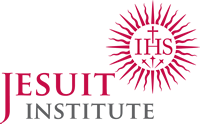| The Examen |
| What is the Examen? |
|
||
The examen is a prayerful reflection from the Spiritual Exercises which has become a key part of Jesuit life and which can have a powerful impact on the lives of those who use it. It consists of setting time aside each day (for Ignatius twice a day, at midday and the end of the day) to reflect prayerfully on the events of the day and where God has been in those events. The examen is an exercise in the practice of attentiveness to my lived experience and also in the art of discernment - becoming aware of the ways in which God is active in my life and resolving to co-operate better with his gifts and calling. The examen should be embedded in the life of Jesuit schools as a way of encouraging pupils and staff to reflect on their experience and to explore the ways in which God is present in that experience. |
|||
| How to do the Examen | |||
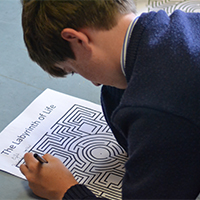 |
There are five steps to the Examen as it appears in the Spiritual Exercises (n.43) of St Ignatius Loyola: 1 Give thanks 2 Ask for light 3 Examine the day 4 Seek forgiveness 5 Resolve to change The examen might take 10 to 15 minutes to complete but can also be done in a much shorter time in school. |
||
| The Ignatian Concepts of Consolation & Desolation | |||
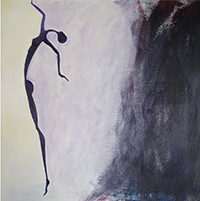 |
St Ignatius' use of the concepts of consolation and desolation are critical to understanding and practising the examen. Consolation is when something is deeply and genuinely good for us, good for our souls, leads us towards God and away from our selfish preoccupations. Desolation is when something is not good for us, when we are wrapped up in ourselves, and careless of God's gifts and grace working in us, when we substitute other things in place of God. Note that Ignatius means spiritual consolation/desolation. While these may be found in our thoughts and emotional responses, they are not the same as our feelings of delight and despair. St Ignatius gives us a quick rule of thumb to 'test' whether something is truly consolation or truly desolation: by noticing the faith, hope and love in us. Something that is truly consolation will show itself in an increase in faith (ie. self-confidence in myself, in my family, in my colleagues and pupils, in society in general and in God), an increase in hope (ie. I am positive about things, always seeing the best, seizing the little opportunities that come my way, having a reason to get out of bed in the morning), and an increase in love (ie. the loving and compassionate ways I treat those around me, especially those I find difficult to love). |
||
faith hope love |
|||
| The Examen and the Rio Action Plan | |||
 |
The Action Plan from the International Congress of Education Delegates held in Rio in 2017, calls for "the delegates commit to promote the Examen of Consciousness in each of the schools to help students listen to their inner voice and learn the path of interiority."
|
||
| Leading the Examen in Schools | |||
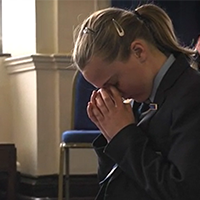 |
If you are responsible for leading the examen in a school, here are some points to think about: The examen needs to have a familiar and regular 'routine' to it. Don't be tempted to use new formats all the time. There needs to be an 'examen time' and an 'examen space'. How best can you create these in your situation? It can be useful to have images on a screen for each of the five steps of the examen. And music can also help children settle quickly. But as children get used to the examen try to use fewer external supports and get them to internalize this spiritual exercise. The examen is not about what made you feel good and what made you feel bad today (although this may be where you start). It is about following Jesus and living the gospel. The examen is an opportunity to review how well I am doing as a disciple of Jesus. One of the fruits of the examen is to begin to notice patterns of consolation and desolation in my life and their causes. This is only achieved if the examen is used regularly, even daily. Adults do not always have to lead the examen. Children can often do it very well, even better! |
||
| Linking the Examen to the Jesuit Pupil Profile | |||
|
Grateful |
Many of the virtues from the Jesuit Pupil Profile can be linked with the spirtual exercise of the examen: In the first step of the examen, I am grateful for all the gifts God bestows on me daily. I then ask God to help me become attentive to my experience and curious about the ways in which he has been at work in my life today. As I discern what has led to consolation and what has led to desolation, I use St Ignatius' 'test' of faith, hope and love. An increase in faith, hope and love suggests that an experience is truly consolation. A decrease in faith, hope and love suggests that an experience is likely to be desolation. The outcome of the examen is generous action in leading a more (magis) intentional life based on the good news of Jesus Christ, the values of his gospel.
|
||
| Examen Resources: Texts | |||
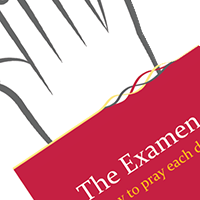 |
The Examen: A Way to Pray each Day This leaflet was produced by the Jesuit Institute as a quick way into the Examen. It uses the five fingers of the hand as an easy way of remembering the steps of the Examen. |
||
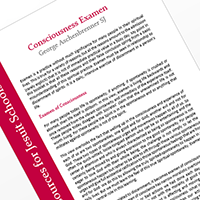 |
Consciousness Examen This seminal article from 1972 by George Aschenbrenner SJ reconsidered the way in which Jesuits and others used the examen. It was part of the "rediscovery" of the Spiritual Exercises of St Ignatius and has been highly influential in proposing a way of using the examen for our own times.
|
||
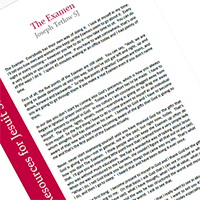 |
Using the Examen A very short article by Joseph Tetlow SJ (2011) introducing the examen to those who may not have used it before. |
||
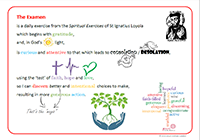 |
The Examen: A Summary A one-sheet quick summary of the dynamics of the examen linked to the Jesuit Pupil Profile virtues. This resource is also available as an animated powerpoint slide.
|
||
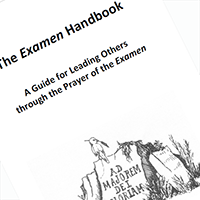 |
The Examen Handbook A guide for leading others through the prayer of the examen by Ross Jones SJ (2017).
|
||
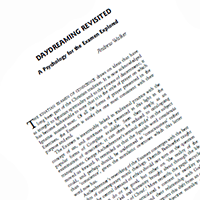 |
Daydreaming Revisisted An article by Andre Walker in The Way (2003) |
||
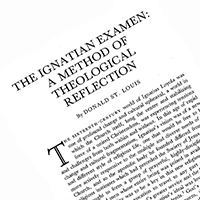 |
The Ignatian Examen An article by Donald St Louis in The Way |
||
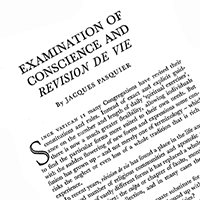 |
Examination of Conscience An article by Jaques Pasquier in The Way |
||
 |
A Prayer for Light The second step of the examen is asking God for light to show where he has been present in the experiences of my day. This prayer could be used or adapted: Lord, |
||
A Simple Examen Prayer This simple examen prayer can be used to introduce the examen each time with younger children: At the end of this day, let us pause and pray. |
|||
 |
Quotations "We're already in the presence of God. What's absent is awareness." "The unexamined life is not worth living." “What then ought a person do who has been thought worthy to bear the great name of Christ? What else except to examine carefully in themself their thoughts and words and deeds to see whether they one and all tend towards Christ or are foreign to them . . . and so there is a harmony between the hidden inner person and the outward appearance." |
||
| Examen Resources: Images | |||
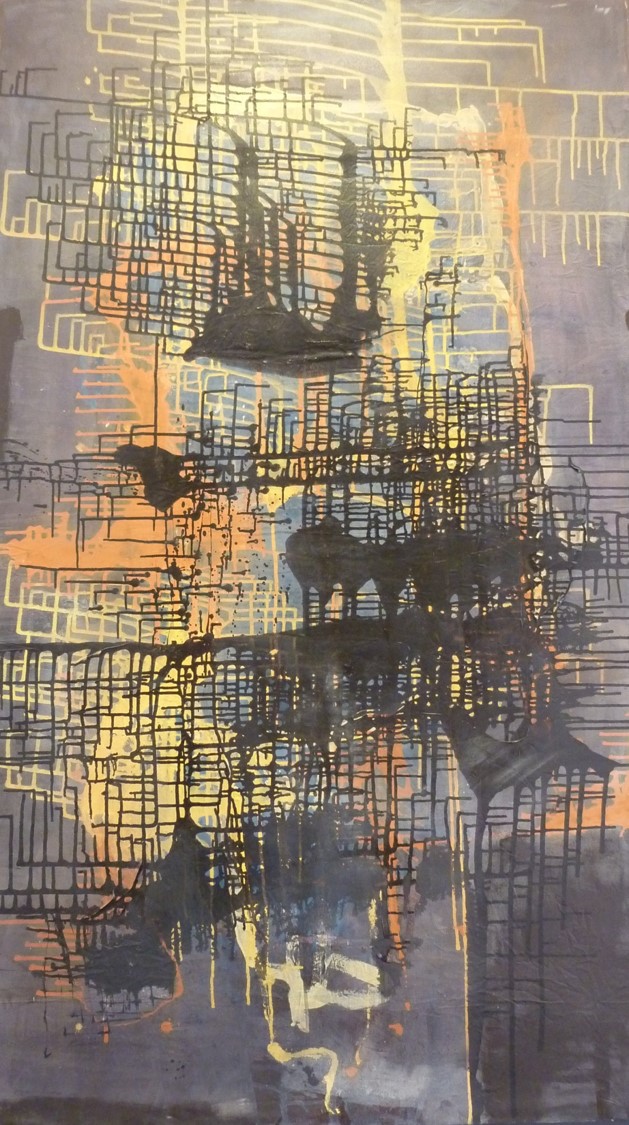 |
Spiritual Exercises Week 1 Painting This painting by Catalan artists Gemma Guasch and Josep Asuncion hangs in the entrance to the spirituality centre at Manresa where, in the cave above which it is built, St Ignatius prayed and wrote the beginnings of the Spiritual Exercises in 1522. It is the first of four canvases representing the four weeks of the Spiritual Exercises. This painting can help explain the dynamic of the First Week of the Exercises and especially of the examen. The painting may be interpreted as representing me. The bright patches and lines in white, orange and yellow, represent all that is best in me. It is what Christian theology calls the 'imago Dei' doctrine: the belief that I am made in the 'image and likeness' of God, my creator (cf. Genesis 1:26), and brought to life with God's own breath/spirit (cf. Genesis 2:7). In front of the bright colours are dark blotches and lines which may be represented as the less good side of me - the stuff that spoils my best self and gets in the way of my growing to be what God calls me to be. All people are a mixture of the good and the bad. The examen is a spiritual exercise which helps us be attentive to the good and the bad, to focus clearly on it, to grow the good, and resolve to deal with the bad. This is the art of discernment.
Photograph © 2018 Jesuit Institute London Les Quatres Setmanes d’Exercicis Espirituales I |
||
 |
Hand Examen from a 1620 Antwerp edition of the Spiritual Exercises of St Ignatius In the palm of the hand are the words from Psalm 118:109, "Anima mea in manibus mei semper" ("My spirit is always in my hands"). More often the sentiment in the psalms is that we are in God's hands - so this reminds us that we each have personal responsibility for the direction of our own lives. The five fingers represent the five steps of the examen: 1 Gratias age (give thanks) 2 Pete lumen (ask for light) 3 Examina (examine) 4 Dole (be sorry) 5 Propone (resolve) Ignatius intended the spiritual exercises of the First Week for the simple and uneducated aand for the spiritually inexperienced. Many of these people could not read and so using the fingers of the hand as a mnemonic for the five steps of the examen would have been exactly the sort of adaptation Ignatius would have welcomed.
|
||
 |
Artwork for Five Finger Examen Schools have used the fingers artwork from the Jesuit Institute examen leaflet for powerpoint presentations, in homework diaries, and in other ways.
|
||
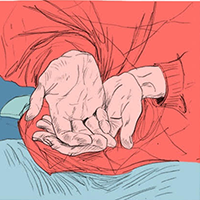 |
Examen Poster
|
||
| More Examen Resources | |||
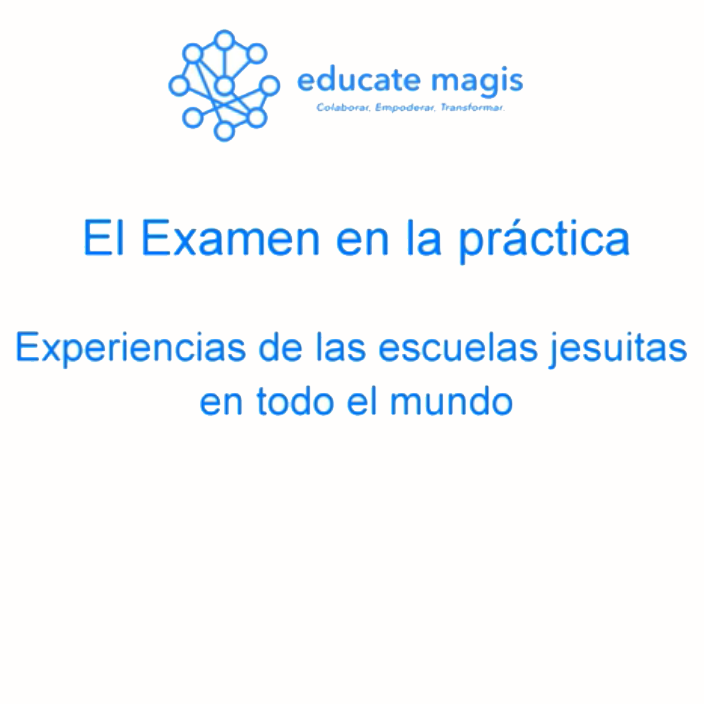 |
The Examen in Practice - Key Ideas NB. This film is in English although it has Spanish subtitles.
|
||
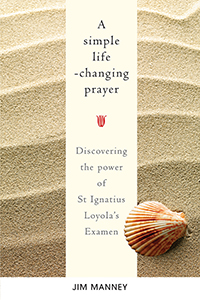 |
A Simple Life-Changing Prayer: |
||
 |
Case Study - Examen at SJB |
||
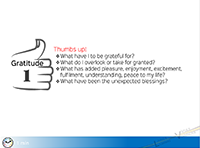 |
Examen Presentation 1
|
||
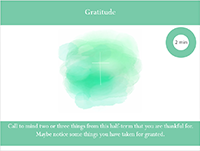 |
Examen Presentation 2 A powerpoint examen from Wimbledon College by James Potter, including an introdution to the examen exercise.
|
||
 |
Reimagining the Examen An App with many variations of the Examen. |
||
 |
Footsteps This well-known anonymous story could be used to introduce the examen - showing how God accompanies us each step of our lives but we often are not attentive to his presence and so assume his absence. One night I dreamed a dream After the last scene of my life flashed before me, This greatly troubled me, so I asked the Lord about it: He whispered, "My precious child,
|
||
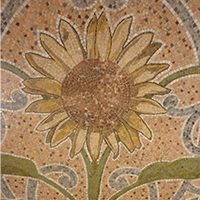 |
The Sunflower As the sunflower turns towards the sun, and tracks the sun's movement across the sky, it grows and flourishes. As we turn towards God, and receive his grace moment by moment, we grow and flourish. "I will consider how all good things and gifts descend from [God] above . . . just as the the rays come down from the sun . . ." (St Ignatius, Spiritual Exercises n.237)
|
||
